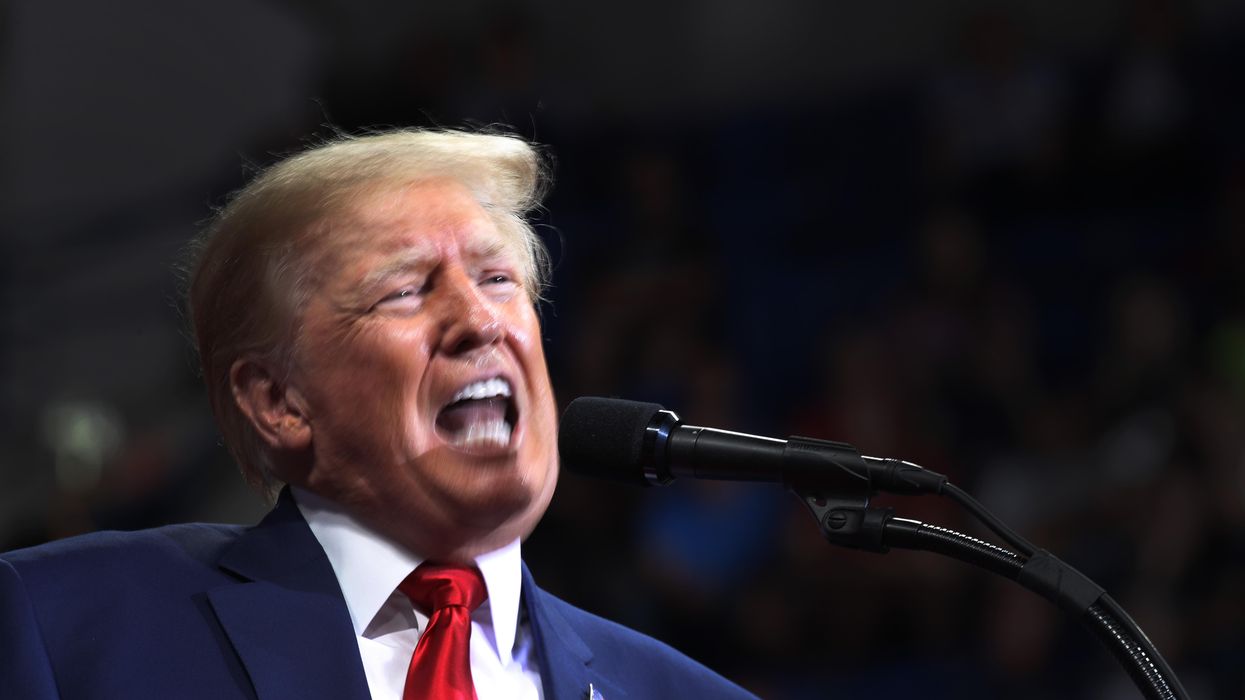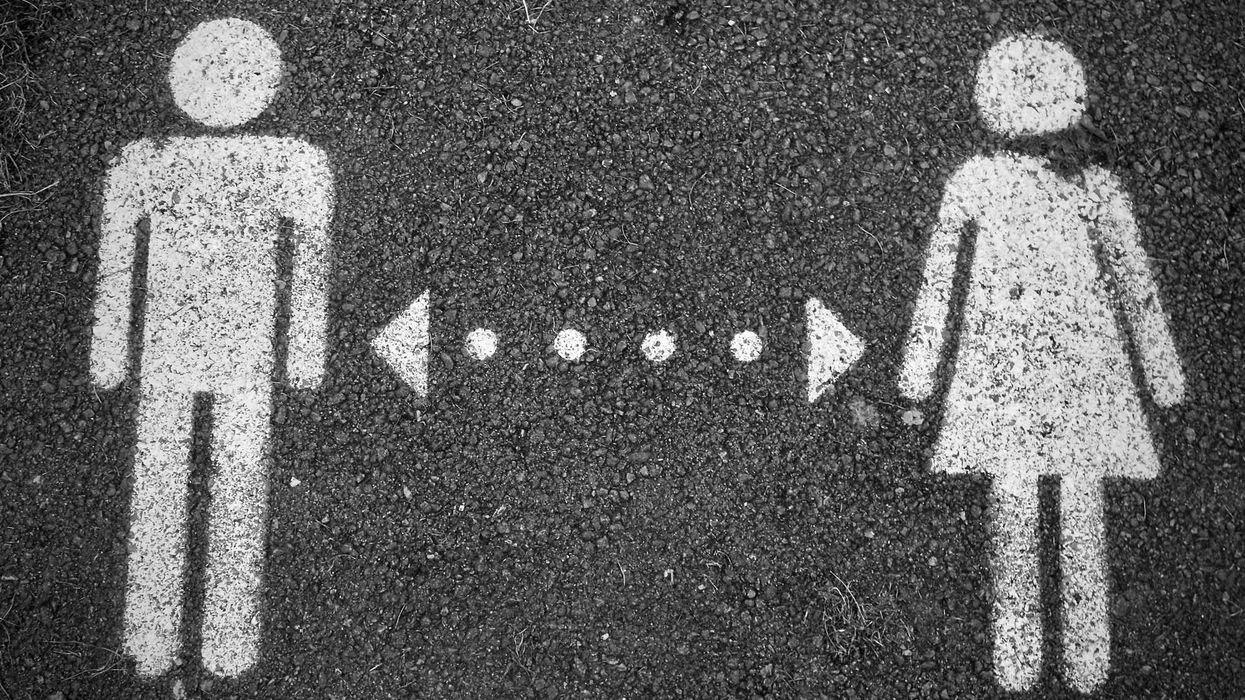Goldstone’s most recent book is "On Account of Race: The Supreme Court, White Supremacy, and the Ravaging of African American Voting Rights.
For some time, “white Christian nationalism” has been forced to lurk in a dark corner of American society but, with the encouragement of Donald Trump, it has been thrust fully into the light. Many of Trump’s followers on the far right have become more than willing to openly voice support for a doctrine that, until recently, had been dismissed as bigoted fringe ideology, outside the realm of legitimate political discourse.
The United States, these archconservatives insist, was not founded to be a racially diverse, religiously homogeneous society, but rather one in which racial purity and what they define as Christian values would form the core of both government and civil society. Some go so far as to insist that the United States was never meant to be a democracy at all, ruled by a majority of its adult citizens, but rather a republic in which representative government was chosen by a limited segment of the citizenry whose principal task was to perpetuate those values.
While such sentiments leave liberals and many centrists aghast, the conservatives are, in fact, to a great degree correct. President Biden, in his recent speech attacking the far right, claimed, “This is not who we are.”
But it is who we were.
For many at the Constitutional Convention, which convened shortly after the populist insurrection known as Shay’s Rebellion, the aim was to limit democracy, not expand it. Connecticut’s Roger Sherman, a key player in Philadelphia, insisted ordinary citizens could not be trusted to encourage sound government and that the nation already suffered from “an excess of democracy.” Another prominent delegate, Virginia’s Edmund Randolph, exhorted the convention to save the United States from democracy, believing, correctly, that such a sentiment would strike a sympathetic chord. Electoral districts were kept large in order to inhibit campaigning by all except those wealthy enough to travel within their expanded limits.
Rule was to be by the few, not the many. Virtually every member of the nation’s elite believed that the right to vote should only be available to those who owned real property. James Madison, Alexander Hamilton and John Adams are all on record as opposing granting the vote to ordinary citizens, who, they claimed, were incapable of making vital decisions freely and wisely. As a result, only 6 percent of the nation was eligible to vote in the first presidential election, and only 42,000 did – this in a nation of more than 3.5 million people.
Except for slaves, who were not considered fully human and deemed by most to be property, the country was certainly supposed to remain white. Although there was no definition of “citizen” in the Constitution, the Naturalization Act of 1790 declared only white males of good character could apply for citizenship. While this obviously excluded Black people, the doctrine was later applied to Chinese, Japanese, and East Asian people. Even certain white people were not good enough. In the first decades of the 20th century, immigration by southern and eastern Europeans was severely curtailed.
While many of the Founders, including Washington, Madison, Jefferson and Hamilton, could hardly be described as devout, there was certainly a tacit understanding that the United States would be a Christian nation, although by Christian they meant Protestant. There was widespread distaste for Catholics, and in a number of states they were restricted from partaking in many civic activities, including, for example, teaching school.
So indeed, the United States was hardly founded on the principles most Americans claim to value and respect.
But that is only half the story.
Whether the United States was created on the prejudices of the day, be they racial-, religious- or class-oriented, the glory of this nation, what has made it the envy of the world, is its struggle over the ensuing two and a half centuries to expand the very rights that the Founders sought to limit. One by one, previously banned groups were allowed into the political process, first in choosing the nation’s leaders and then by becoming them. Property-holding requirements to vote were eliminated in the first decades of the 19th century. Black Americans were guaranteed citizenship and the right to vote by the 14th and 15th amendments and were allowed to become naturalized citizens in 1870. Women were granted the vote by the 19th Amendment in 1920.
Equal rights struggled ahead as well. People from China, Japan, East Asia and southern Europe, as well as Native Americans, were eventually prohibited by law from being denied what was termed in the 14th Amendment the “privileges and immunities of citizenship.” Catholics and Jews, once despised religious minorities, were permitted to aspire to any position in government they so desired and have become among the most prominent of the nation’s leaders. That the current Supreme Court, where white Christian nationalists hope to find support, is dominated by the very brand of conservative Catholic that was once the focal point of religious prejudice is the ultimate irony.
This is not to say, of course, that America has been successful in achieving full equality for previously marginalized groups, or that the progress the nation has made is sufficient to eliminate bigotry, job and housing discrimination, and fair treatment under the law. Enormous problems remain and certain minorities have to constantly fight both the legislatures and the courts to be treated with even a modicum of fairness. They are often prevented from succeeding.
But slow and tortuous as it may have been, at least the nation was moving in the right direction. Forward.
Until now.
What white Christian nationalists are trying so hard to achieve is a legal and philosophical u-turn, to return the United States to the very outmoded values the Founding Fathers foisted on the nation at the end of the 18th century. Voting is to be limited, citizenship restricted, religious dogma substituted for tolerance, the legal system structured to keep minority groups from threatening white pre-eminence, and warmed over theocracy substituted for democratic rule. And all this under the banner of making America great again.
What has actually made America great was the willingness by those in power to share it, however grudgingly, and create a semblance of equal opportunity even though some in the traditional ruling groups would lose privileges they often had not earned. People from virtually every country in the world wanted to come to the nation that Americans struggled for decades and decades to create, as imperfect as it remains. They did not come because its leaders disparaged the poor, incarcerated racial or political minorities, or mocked the handicapped and those whose sexual orientation did not fit in faux religious boxes. If that is what they wanted, they had any number of other choices, such as Iran, Russia or Hungary.
If America genuinely wants to be great, it will have to move forward, not backward. Only in rejecting values that are little but thinly disguised bigotry can Americans agree with President Biden that it is not who we are.



















